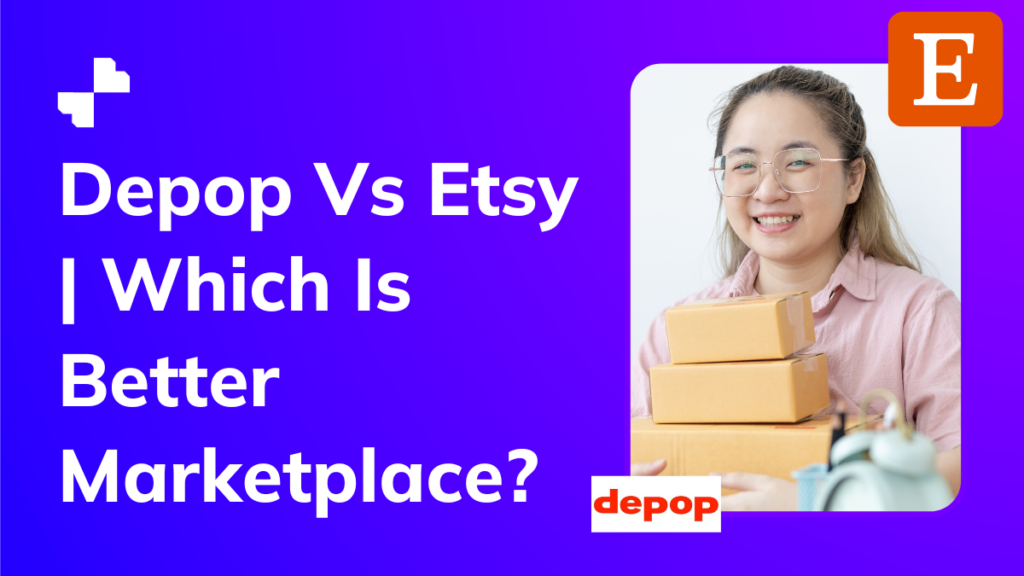Even though Depop and Etsy are both e-commerce platforms where small business owners set up online stores to sell their products, the concepts between the two platforms are different from each other. Naturally, the features and business structure of these two websites are also unlike each other.
Depop is an e-commerce platform for thrifting vintage and branded clothing and accessories. Anyone can put up listings of their used items that are in proper condition and sell them to whoever comes to buy them first. Depop is strictly a clothing and accessory-based website.
On the other hand, Etsy is a marketplace for everyone and specializes in homemade as well as vintage products such as hand-painted home decor to hand-stitched clothing items. Etsy is a place for creative sellers who wishes to earn money by selling their talents through their products. Selling bulk and wholesale items is commonly seen in Etsy listings.
Product Listing
As mentioned before, Depop focuses on vintage and branded used items whereas, on Etsy, sellers list homemade products in small batches. In each listing, sellers can incorporate more than one item of similar categories with different patterns or colors in Etsy but in the case of Depop, the seller can only list one item at a time.
Commission fee
As both marketplaces have distinct and contrasting business structures, the commission fee also varies.
Depop charges a 10% fee on each sale which can only be paid if the seller links their PayPal account with Depop. Once a sale is made, Depop automatically subtracts the commission fee and shipping cost from Depop Balance and the seller can transfer the profit directly to their bank account within 10 business days. Read this article on how to transfer Depop Balance.
Etsy charges $0.20 for listing each item (private or public) and once an item is sold it charges 6.5% of the item’s selling price as a transaction fee. Like Depop, Etsy also automatically subtracts the fee and posts the profit to the seller’s account only after an item is sold.
Shipping
Shipping with Depop can be a bit complicated as it allows different means of shipping. One can either ship on their own user third-party shipping companies or sell the item in person. Or, sellers can also use Depop courier services for shipping their items. According to different country taxes, Depop also charges a shipping fee for different countries. Here you can learn more about shipping with Depop.
Etsy has a one-stop solution for shipping. Buy the shipping labels for the item from the Etsy shipping profile and the postal services will pick up the products and deliver them to your buyers. Etsy also provides various shipping services such as FedEx, USPS, and Canada Post to post both locally and internationally.
Promotion
Depop was originally created as a social media and it still has the essence of a socially engaging platform where users can buy and sell clothes and accessories. To promote a listing there are no such advertisement features in Depop, rather the more follower and engagement you have in the application, the more visibility your listings get. And this is how to increase followers in your Depop account using trending and proper hashtags.
Etsy provides various advertisement tools for sellers to increase the visibility of their listings. Even though it charges a customized amount for promotional advertisements, it can be a great way to attract potential buyers. Another way to promote Etsy listing is by using appropriate hashtags and SEO-optimized terms in the product descriptions.
Services
Depop offers services such as ‘Make Offers’ where buyers can haggle with the sellers without going back and forth in text messages. Both Etsy and Depop have a community forum where fellow sellers can communicate with each other to learn and grow together and also provides 24/7 customer support for inquiries and help.
In Conclusion
All E-commerce marketplaces share the same ideology of providing a platform for business owners to open up their online shops and grow their businesses. But each platform has its own way to present the marketplaces with different features and business structures. Therefore, it is very necessary for the sellers to understand what they themselves want to sell and how they want to execute their business ideologies, and only then can they choose the best e-commerce platform that fits them perfectly.

